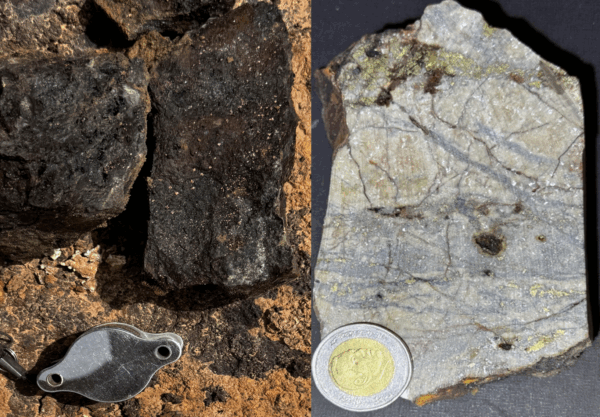QUITO, Ecuador, Nov. 20, 2024 (GLOBE NEWSWIRE) — Solaris Resources Inc. (TSX: SLS; NYSE: SLSR) (“Solaris” or the “Company”) is pleased to announce the final steps to complete its emigration by year-end following the Company’s previous announcement to position the Company to maximize returns for shareholders and protect the interests of stakeholders by aligning with regulators in Ecuador as Warintza completes the permitting process (see the Company’s news release dated September 9, 2024).
In connection with the emigration, the Company is pleased to announce the appointment of Matthew Rowlinson as President and Chief Executive Officer of the Company, effective January 1, 2025, to be based in a new office in Zug, Switzerland, with further appointments in this office to follow. Mr. Rowlinson is uniquely well positioned for this role having most recently served as the Head of Copper Business Development for Glencore, one of the world’s largest copper miners.
The Company is also pleased to announce the appointment of Mr. Matthew Rowlinson, Mr. Rodrigo Borja, and Mr. Hans Wick to the Company’s board of directors effective January 1, 2025. The Company’s directors in Canada, Mr. Daniel Earle, Ms. Poonam Puri, Mr. Kevin Thomson and Mr. Ron Walsh will resign from their roles on the board effective January 1, 2025.
Mr. Rowlinson will lead the executive team and be supported by the Warintza Project team led by the Company’s Chief Operating Officer, Mr. Javier Toro. Mr. Toro has built a technical team based in Lima, Peru, with recent hires from senior copper mining companies as Project Director, Senior Resource Geologist, Geotechnical Manager, Senior Metallurgical Engineer, and Mine Planning Engineers. Additionally, Mr. Toro will continue to be supported by Ecuadorian executives, Mr. Jorge Fierro, Vice President, Exploration, and Mr. Ricardo Obando, newly promoted to the role of Vice President, Community and Government Affairs, both of whom have been with Solaris since inception.
Placement and Spin-Out
In connection with his appointment, Mr. Rowlinson has agreed to subscribe for C$500,000 of common shares from the Company pursuant to a private placement.
The Company anticipates completing a spin-out transaction to capitalize on its non-core assets, including La Verde, Capricho, and Paco Orco, which will form the foundation of a new growth-oriented copper company focused on the consolidation of operating and advanced development assets with exceptional upside potential. This new company will benefit from the deep knowledge of the universe of projects and extensive network of relationships Mr. Rowlinson brings to Solaris to rapidly scale its business. The Company will announce additional details about this exciting venture in the new year.
Matthew Rowlinson Appointed President & CEO, and to Board of Directors
Matthew Rowlinson has extensive experience from senior executive roles in Glencore’s copper department over the past eleven years. Since 2021, Matthew served as Head of Copper Business Development where he was jointly responsible for the strategic direction of one of the largest copper portfolios in the sector and developed deep knowledge of the industry and global inventory of projects.
In this role, he successfully executed multiple public and private M&A transactions, highlighted by Glencore’s consolidation of the global scale MARA project. Matthew joined Glencore in 2013 as an asset manager for Latin America and was subsequently appointed Chief Financial Officer for Copper Americas. He began his career with Ernst & Young as an auditor of multinational mining and financial companies and is a qualified Chartered Accountant that holds an MBA from the University of Bath, UK.
Rodrigo Borja Appointed to Board of Directors
Rodrigo Borja is a senior lawyer with decades of experience in Ecuador, including as the Chief Legal Officer (“CLO”) of several foreign companies with operations in the mining and oil sectors. In the mining sector, Rodrigo was CLO of Kinross’ Ecuador subsidiary, where he managed all legal aspects of the company. He led the negotiations with the Ecuadorian state for the Mining Exploitation Contract for the Fruta del Norte project and the investment contract that protects foreign investment. Rodrigo is currently a partner with AVL Abogados where he leads its mining practice.
Prior to this, Rodrigo was the CLO of the Brazilian oil company Petrobras, responsible for all legal aspects of its operation from 2002 to 2010. He was also a member of the Executive Committee, as well as an alternate member of the Board of Directors of OCP Ecuador, Ecuador’s main oil pipeline.
Hans Wick Appointed to Board of Directors
Hans Wick has decades of experience in the financial services and investment sector, with his most recent role as the Managing Director of a Swiss private bank. As a senior financial services and investment professional, Hans benefits from an in-depth knowledge of the sector and a wide network of contacts which he applies to his mandates and lends to the boards of directors he serves on. Over the course of his banking career, Hans has also been active in the mining sector for decades as an investor and advisor to numerous companies.
Ricardo Obando Appointed Vice President, Community and Government Affairs
Ricardo Obando brings over 16 years of experience in the public and private sectors in Ecuador and is an expert in the field of government and community social relations, with a specialty in the formulation and design of dialogue and consultation processes. Until his promotion, Ricardo served as Country Manager, Ecuador, for Solaris since 2019.
Prior to this, Mr. Obando held senior roles in the Ecuadorian public sector, including Advisor to the Ministry of Energy and Mines, Strategic Coordinator of Social Intervention of the Ministry of Strategic Sectors, as well as Director of Social and Environmental Monitoring of the Hydrocarbons Secretariat and Coordinator of Social Participation, Community Relations and Management in the Ministry of Environment.
Final Emigration Steps
As part of the Company’s final emigration steps, the Company anticipates that effective January 1, 2025, its Canadian offices will be closed, the Company and its subsidiaries will have no individuals in Canada who are employed or self-employed in connection with the Company’s or its subsidiaries’ operations, the Company and its subsidiaries will have no assets in Canada used in carrying on the Company’s or its subsidiaries’ operations, and the Company and its subsidiaries will otherwise not carry on any part of their operations in Canada.
The Company does not anticipate that the foregoing emigration steps will pose adverse tax consequences for the Company or impact its stock exchange listings.
Executive Chairman’s Message
Mr. Richard Warke, Executive Chairman of Solaris, commented, “I want to offer my sincerest gratitude to the Solaris team for their unrelenting drive to advance the late David Lowell’s greenfield discovery at Warintza to become a major copper project more than ten-times its original size in only five years.
As early works infrastructure development is now underway, this team has brought Warintza within view of completing permitting and commencing full-scale construction for what could be one of the industry’s last major copper districts to be developed at low elevation and adjacent to infrastructure. I would also like to thank the outgoing directors for their guidance during this journey.
I am firmly committed to maximizing returns for shareholders and protecting the interests of stakeholders and this reorganization creates the strategic flexibility and alignment of interests with regulators to do so. I want to welcome Matt and the incoming directors to Solaris as we position ourselves for a pivotal year ahead.”
On behalf of the Board of Solaris Resources Inc.
“Daniel Earle”
President & CEO, Director
For Further Information
Jacqueline Wagenaar, VP Investor Relations
Direct: 416-366-5678 Ext. 203
Email: [email protected]
About Solaris Resources Inc.
Solaris is advancing a portfolio of copper and gold assets in the Americas, which includes a world class copper resource with expansion and discovery potential at its Warintza Project in Ecuador; a series of grass roots exploration projects with discovery potential in Peru and Chile; and significant leverage to increasing copper prices through its 60% interest in the La Verde joint-venture project with a subsidiary of Teck Resources in Mexico.
Cautionary Notes and Forward-looking Statements
This document contains certain forward-looking information and forward-looking statements within the meaning of applicable securities legislation (collectively “forward-looking statements”). The use of the words “will” and “expected” and similar expressions are intended to identify forward-looking statements. These statements include statements regarding the Company’s future growth or value, and expectations regarding the performance and focus of the new management team and Board of Directors; the terms of the private placement; the ability of the Company to satisfy regulatory, stock exchange and commercial closing conditions of the private placement; and the timing, benefits, structure and completion of the proposed spin-out. Although Solaris believes that the expectations reflected in such forward-looking statements and/or information are reasonable, readers are cautioned that actual results may vary from the forward-looking statements. The Company has based these forward-looking statements and information on the Company’s current expectations and assumptions about future events including assumptions regarding the exploration and regional programs. These statements also involve known and unknown risks, uncertainties and other factors that may cause actual results or events to differ materially from those anticipated in such forward-looking statements, including the risks, uncertainties and other factors identified in the Solaris Management’s Discussion and Analysis, for the year ended December 31, 2023 available at www.sedarplus.ca. Furthermore, the forward-looking statements contained in this news release are made as at the date of this news release and Solaris does not undertake any obligation to publicly update or revise any of these forward-looking statements except as may be required by applicable securities laws.




